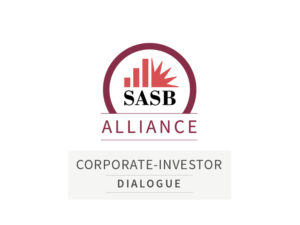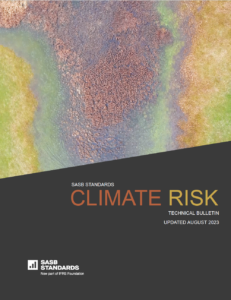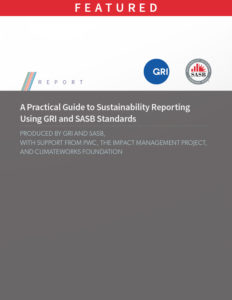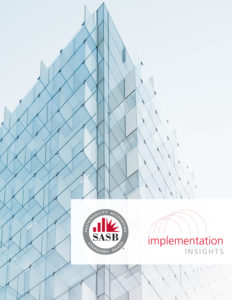BASF, the German multinational chemical company with more than 110,000 employees worldwide and sales of €59 billion in 2020, has long been a pioneer in shareholder-focused sustainability reporting. With a SASB index presented in an innovative online format organised under SASB’s environmental, human capital, business model & innovation, and leadership & governance dimensions, BASF approaches SASB reporting with leadership from both its investor relations and sustainability teams.
We spoke to Dr. Stefanie Wettberg, Senior Vice President, BASF Investor Relations, and Tanja Castor, Senior Expert, BASF Sustainability Strategy, focusing on Integrated Reporting. For the full interview, download the SASB Implementation Insights publication dedicated to BASF. Here we present a few highlights.
Why did you decide to use SASB Standards to communicate with investors?
Stefanie: Analysts and investors demand robust information on material ESG topics to be able to holistically assess a company’s medium and long-term performance. They need sector-specific information to derive the appropriate benchmarks. SASB meets this need by providing a structured framework for the relevant KPIs by industry.
How does SASB complement your use of GRI, Global Compact, TCFD and other frameworks? For example, does it serve a specific audience?
Tanja: The SASB standard is a meaningful addition to the established ESG reporting standards that form the basis for our reporting. We use the International Integrated Reporting Framework as a principles-based framework and the Global Reporting Initiative (GRI) as an indicator-based standard.
Both IIRC and GRI are comprehensive and cover overarching ESG transparency requirements but offer limited sector-specific comparison. SASB fills a gap here by enabling sector-specific benchmarks. Relevant target groups include, in particular, investors and rating agencies.
What are the advantages of an integrated report, and how do you see SASB Standards fitting in?
Stefanie: When we started with Integrated Reporting in 2007, we did so because we wanted our reporting to adequately reflect our corporate strategy. We integrate ESG criteria into all relevant decision-making and steering processes. Therefore, we felt that it would be artificial to report on interconnected financial and non-financial KPIs in two separate reports.
Only focusing on financial performance would not reflect the complexity of a company’s overall value creation. To holistically understand and assess a company’s future risks and opportunities, investors and stakeholders need the full picture. We believe that integrated reporting is a helpful tool to gain an in-depth understanding of the relevant interdependencies between ESG and financial performance.
Our experience over the past decade shows that integrated reporting not only serves as a disclosure tool, but has also helped to foster integrated thinking within the company and to bring our finance, sustainability, and investor relations teams closer together.
SASB’s Standards are a complementary framework for sector-specific information, which can help investors to better assess our performance on material ESG topics compared with our peers.
Read additional implementation insights from BASF in the SASB Knowledge Hub.




